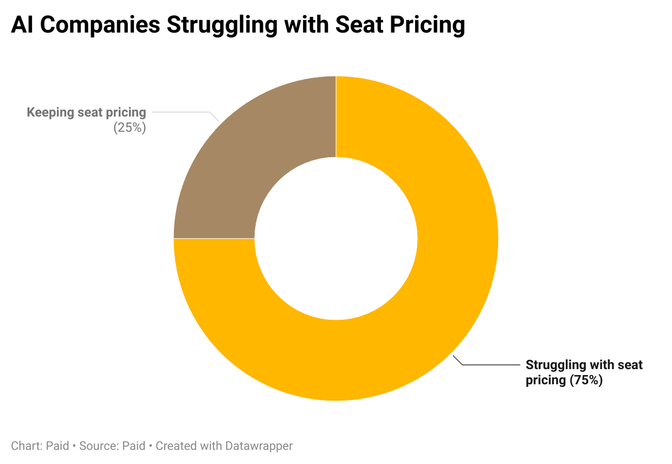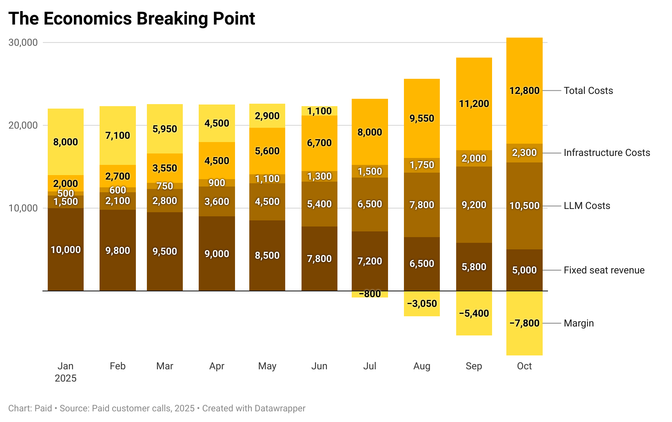Insights straight to your inbox
Join 10,000+ subscribers getting the latest insights on AI monetization.


After 250+ conversations with AI agent companies, we keep hearing the same impossible math problem.
Agents reduce headcount while delivering more value.
Seat-based pricing punishes you for this success.
One founder building AI agents put it perfectly:
"I am actually reducing headcount to serve the same purpose. So when I have fewer seats, the credits won't make up for the difference, because the credits are attached to a seat. My expansion became a nightmare."
Think about that for a second.
Your product works. It automates tasks. It replaces headcount. Customers need fewer seats.
Your reward? Less revenue.
"Our original 1.0 was kind of more of a SaaS product. We charge per seat per user... people liked it, right? Now we're releasing our 2.0 product, which probably should be more of a consumption product because of the workflows that will support being a little bit more broad, probably achieving more at scale."
More scale. Fewer seats. Lower revenue.
One of our customers sees the trap clearly:
"Right now, if I were to have a seat for every user in an organization... the margin is going to be tremendously good right now because usage is so little. They're just getting used to it. At one point they're going to start to use it so much I can't increase my SaaS pricing that way."
The more successful your AI agent becomes, the worse your economics get.
Another spelled it out more vividly:
"How am I going to charge seat-based when I'm incurring these costs in the background with LLMs, data providers, everything? I'm incurring these costs to make these agents become alive on my platform. But I'm only charging a per-seat price."
Variable costs. Fixed seat revenue. Growing usage. Shrinking headcount.
The math doesn't work.
From our conversations, the realization is universal:

One company revealed their board's directive: "They've got to move off seat price, because if they remain on seat price, there's a bunch of other tools that look the same."
Another founder was even more direct:
"I fundamentally believe seats are going to die. Because seats are being destroyed when workflow consumption is going up."

Seat-based pricing assumes more value = more users, but as we know AI agents deliver more value with fewer users and fewer butts-in-seats.
You can't solve this with discounts. You can't solve it with usage credits attached to seats. You can't solve it by ignoring it.
As one founder concluded a recent call with us: "If they don't change, they're gonna get crushed."
Seat-based pricing will not survive the AI agent revolution, but you still can.
Data from 250+ customer conversations with AI agent companies, 2025.
Join 10,000+ subscribers getting the latest insights on AI monetization.



Price smarter. Protect margins. Grow revenue.